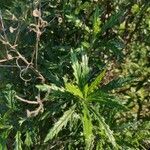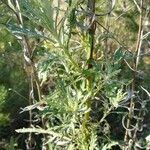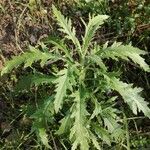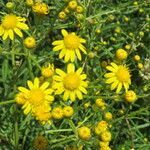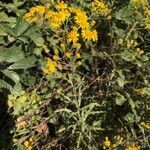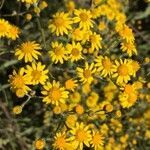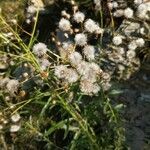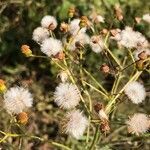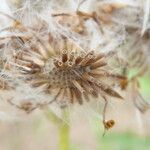Robust, thinly grey-cobwebby annual or short-lived perennial to 2 m, branching above. Leaves oblanceolate, coarsely toothed, margins revolute, glabrescent above, white-felted beneath. Flower heads radiate, in lax, terminal corymbs, yellow, involucre calycled.
Similar to S. polyanthemoides (above) except: Capitula larger, involucral bracts 4-5 mm long, rays ± 13. Flowering time mainly Nov.-Jan.
Very like S. polyanthemoides, but distinguished by its bigger heads with c. 13 rays.
A herb.
